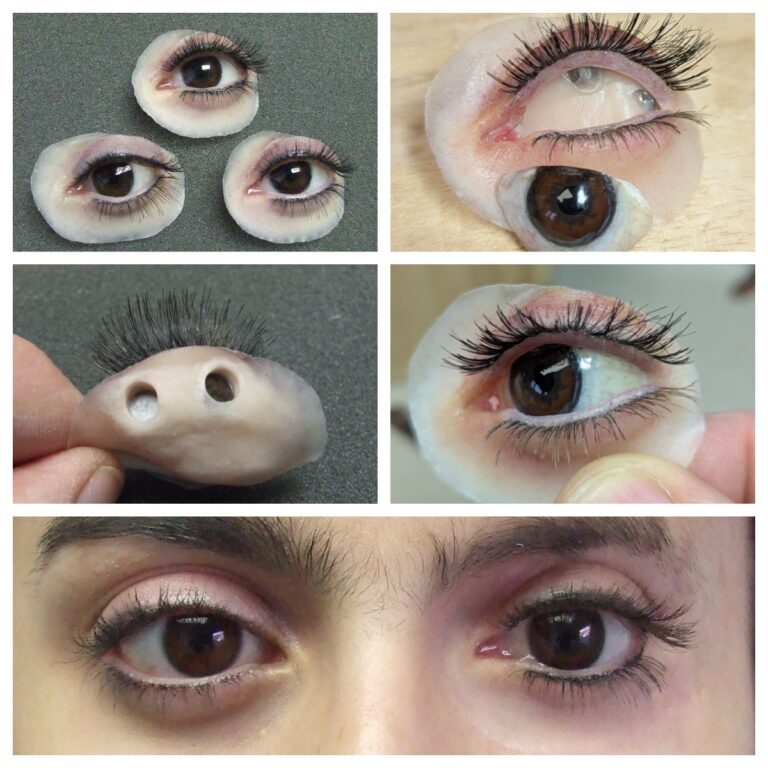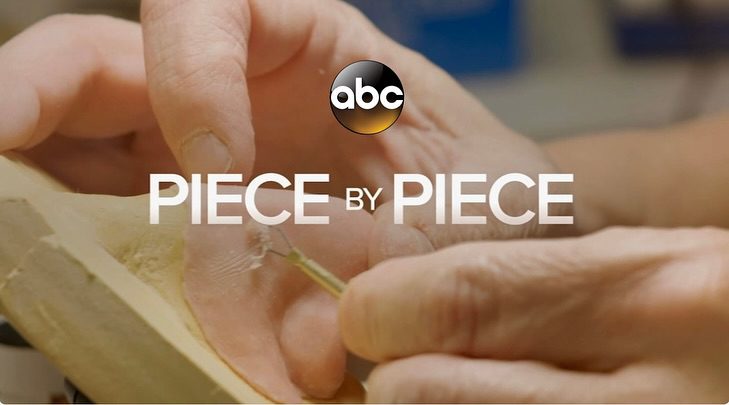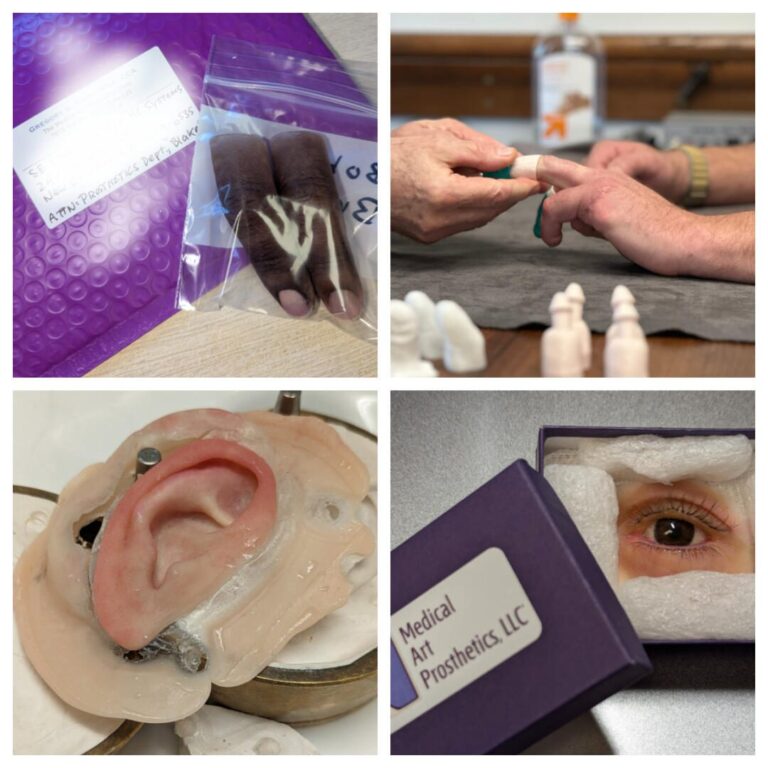Research published by the National Institute of Health (NIH) demonstrates that patients in need of facial prosthetics and facial reconstruction are most successfully served by multidisciplinary teams of surgeons and prosthetic specialists. Medical Art Prosthetics is dedicated to collaboration. Collaboration with scientists, clinicians, students and engineers in related fields to serve patients in need of prosthetics with excellence. For many years, Anaplastologist and Prosthetist Gregory Gion, Founder of Medical Art Prosthetics, has worked with biomedical engineering students. Students working together at the University of Wisconsin-Madison’s Student Design Consortium. The goal is to bring the strengths of various disciplines together to advance anaplastology and serve the needs of patients both today and for the future.
Facial Prosthetic Abutments
Since 2019, Gion has worked with University of Wisconsin-Madison biomedical engineering students. Those teams worked on three consecutive projects designing tools for clinicians to easily access osseointegration craniofacial prosthetic abutments.
When clinicians begin the process of screwing in craniofacial prosthesis abutments, they must first place the abutment and start threading into the surgically implanted bone fixture. Next, a small torque wrench is used to screw in the healing abutment, and eventually a final abutment, to the patient’s osseointegrated fixtures. Often the initial placement of the abutment is done with the operator’s fingers. In some cases, this proves difficult due to small spaces and difficult angles within the orbital or nasal cavity. Lower-profile tools are needed to hold and turn the abutments and caps inside the cavity. Rotational force must be transferred down the handle from outside the cavity. This series of projects aims to design devices that allow easy access to the abutment, and allow the clinician to efficiently thread the screw and remove or attach new abutments.
Advancing the Field of Facial Prosthetics
Solving real-world biomedical challenges using the latest research trains students to become forward-thinking engineers. They are then focused on serving patient needs with excellence. Medical Art Prosthetics is proud to partner with the students and faculty of the University of Wisconsin-Madison’s Biomedical Engineering Design Consortium. The goal is to facilitate and further a multidisciplinary approach advancing the field and practice of facial prosthetics and anaplastology.
Additional Scientific Outreach and Advancement
Gion also recently advised University of Wisconsin-Madison biomedical engineering students. Students worked to design medical piercings modified with magnets to retain auricular (ear) and nasal (nose) prostheses. Students also worked to design of a load sensing anatomical simulator model for silicone prosthetic fingers. Learn more about Medical Art Prosthetics’ commitment to scientific outreach and how it benefits current patients and professional practices.




